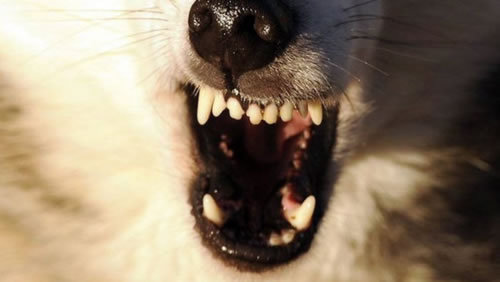Some knowledge about rabies Rabies prevention
(A) Strengthen animal management and control the source of infection
- Promote the dangers of owning dogs and other wild animals.
- Wild dogs should be hunted as much as possible.
- Domestic dogs should be strictly confined. Registration and vaccination are carried out.
- Wild dogs or rabid animals should be killed immediately, burned or buried deep, do not skin meat.
(B) wound treatment on the spot timely (preferably within a few minutes after the bite) to clean and disinfect the wound: 3%-5% soapy water or 0.1% new germinal or then fully wash with water, deep wound irrigation, with a syringe into the depth of the wound perfusion cleaning, to achieve comprehensive and thorough. Disinfect with 75% ethanol, then rub with concentrated iodine tincture. Local wound treatment the earlier the better, even if delayed 1-2 days or even 3-4 days should not ignore the local treatment, at this time if the wound has scab, should also be removed after the scab treatment. The wound should not be bandaged or sewed, and the open wound should be exposed as much as possible. If the wound must be bandaged and stitched (for example, if it has entered a large blood vessel), ensure that the wound has been thoroughly cleaned and disinfected and that anti-rabies serum has been applied as prescribed. Use antibiotics or refined tetanus antitoxins if necessary. A severe bite victim may be injected with anti-rabies serum around and at the base of the wound, or rabies immunoglobulin may be administered. If economic conditions permit, or severe bites, combined use of interferon is recommended to enhance the protective effect.
(C) Vaccination Vaccination should be given to veterinarians, animal control personnel, hunters, field workers and medical personnel who may be exposed to rabies virus.
In principle, 1.0ml of rabies vaccine should be injected into each muscle on 1, 7, and 28 days, and then immunization should be strengthened once every 1 to 3 years. Vaccination should be given to those bitten by animals such as wolves, foxes, dogs and cats. The method depends on the condition of injury, the type of vaccine, and the instructions for use. At the same time, the immune serum is added, and the effect is better. Rabies is transmitted by about 80% of the rabies, followed by cats, pigs, cattle, horses and other domestic animals and wild animals such as warm blood animals. Areas and countries where canine rabies has been controlled are dominated by wild animals such as wolves, foxes, skunks (weasels), and raccoons. There are also vampire bats in South America that carry the virus and are an important source of infection there. There are small amounts of the virus in the saliva of patients, but there are very few cases of human-to-human transmission. In recent years, an average of 14.9% (8% to 25%) was reported in healthy dogs. The route of transmission of the virus is mainly through bites, but also by virus-carrying saliva through various wounds and scratches, licking of mucous membranes and skin. A small number of infected dogs can be infected through slaughtering, skinning, cutting and other processes. Occasionally infected by inhalation of viral aerosols in bat colony caves. The incidence rate after being bitten by a sick dog is about 15% to 30%, and after being bitten by a sick Wolf is 50% to 60%. With timely wound treatment and vaccination, the incidence can be reduced to about 0.15%.
Factors related to the incidence are:
- Bite sites such as head, face, neck and fingers, perineal mucosa and other peripheral nerve distribution rich, or severe bite (refers to the above sites of multiple bites, or tissue tears, massive bleeding), due to short incubation period, easy to develop;
- The wound is not treated or mishandled;
- The rabies vaccine was not fully injected in time;
- The bitten person has immunocompromised or immune deficiency. The disease can occur throughout the year, multiple seasons are different, to spring and summer or summer and autumn slightly more. The patients were more male than female, and more young people in rural areas, which was related to contact with animals.
Is it necessary to get rabies vaccine after getting rabies vaccine and being bitten by a dog?
At present, more and more pet families, many pet lovers have been bitten by dogs or cats and other small animals experience, therefore, they have been vaccinated rabies vaccine and bitten by dogs and other small animals, whether they still need to vaccinate rabies vaccine?
According to statistics, more than 95% of human rabies is caused by canine rabies infection. Rabies is a deadly disease that kills almost 100 percent of people who contract it. Therefore, after being injured by dogs, it is necessary to go to the hospital in time to deal with the wound, and go to the local health and anti-epidemic station to inject rabies vaccine. Rabies vaccination is the only effective way to prevent rabies. Mild dog bite victims need to receive 5 shots of rabies vaccine (full immunization); If you are bitten by a dog again within a year, you need to strengthen the rabies vaccine 1 shot; If you are bitten by a dog again after a year of full immunization, you should give 2 to 3 injections. If the bite is serious or in special circumstances, it should be handled by the doctor of the epidemic prevention station according to the circumstances. Please keep in mind that although the mortality rate of rabies is high, it can be prevented. As long as the wound is treated promptly after the bite and rabies vaccination is given, the incidence of rabies can be reduced and avoided.”
